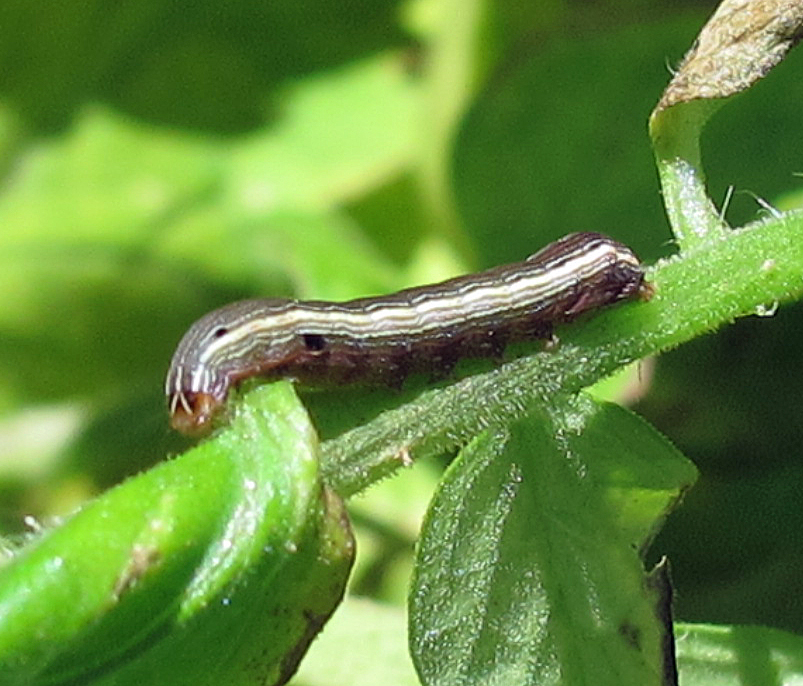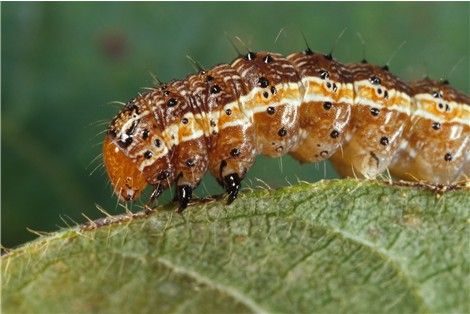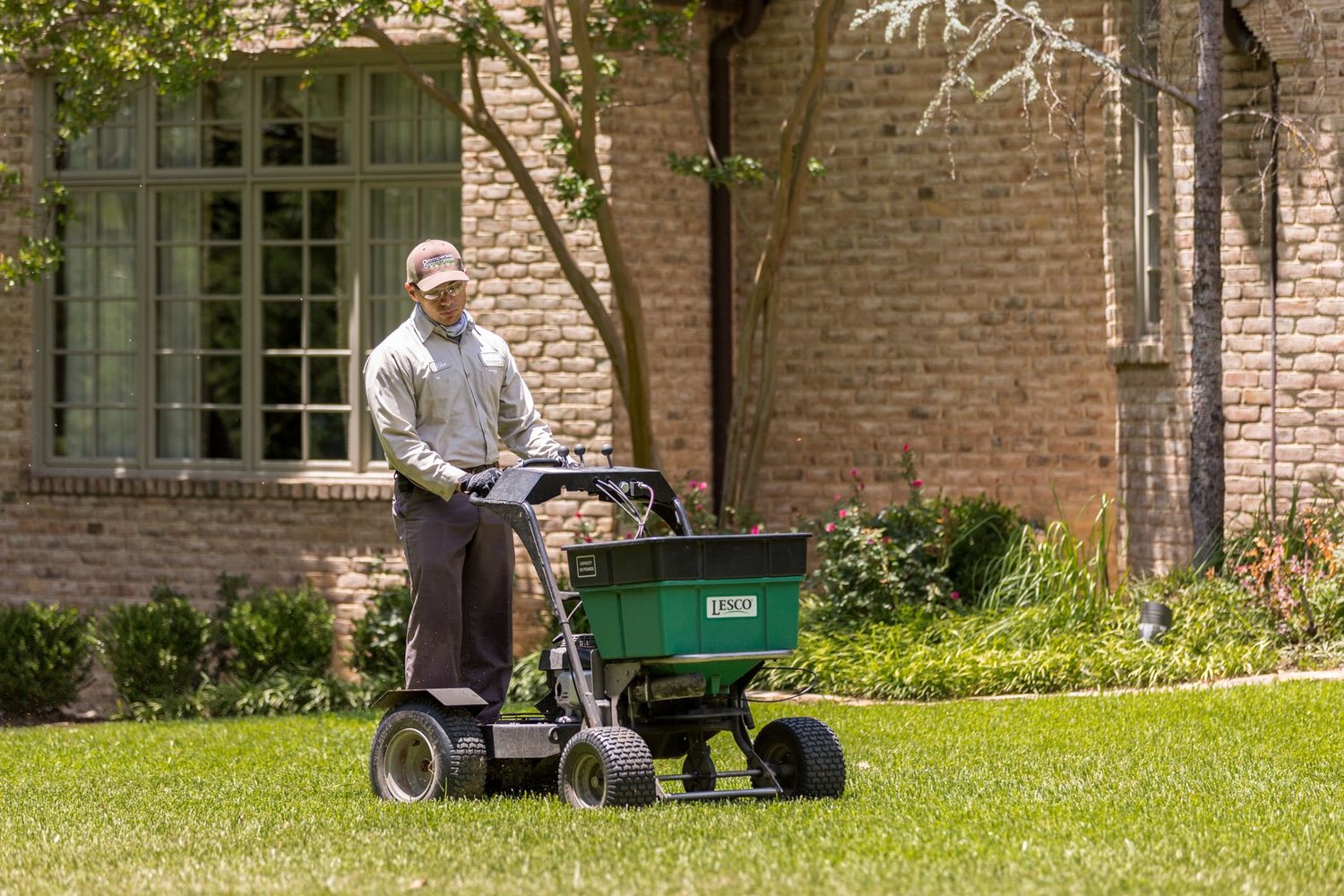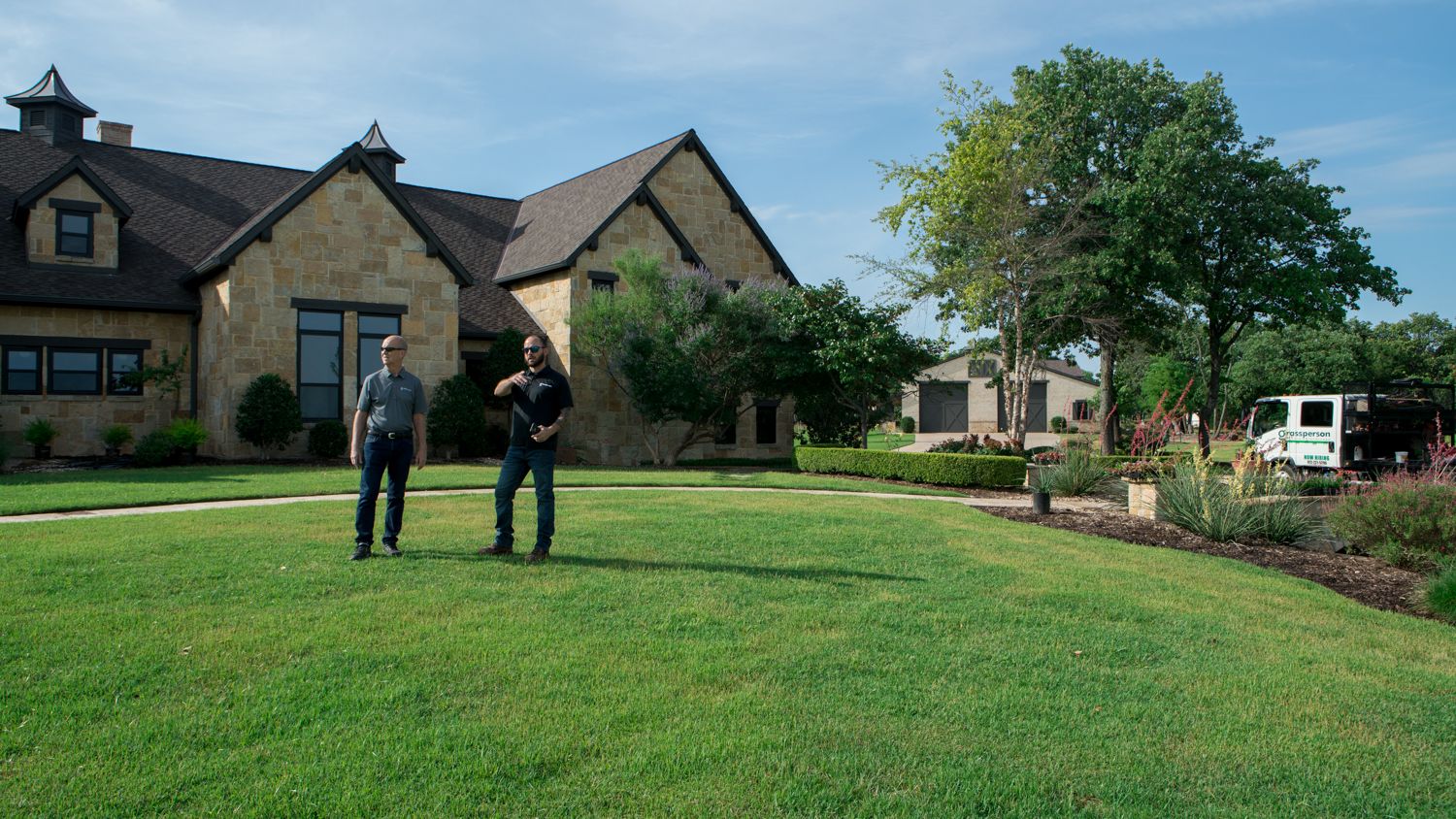
When armyworms march into your lawn, they can become a challenging enemy to battle. That’s because they can be highly destructive in little to no time at all. Their infestations occur in large numbers and unfortunately, their presence often goes unnoticed until the damage is severe.
For that reason, it’s really important that you’re on top of this threat.
Although armyworms in North Texas are a serious threat, understanding more about this pest will help you successfully combat it. We understand your concerns and we’ve written this article to help educate you on what’s important to know.
Identifying armyworms in your grass is an important first step. Armyworms are the larvae of moths. The full-grown larvae are substantial in size—between 1.5 and 2 inches long. These pests are light green or tan in their early growth stage and dark green or brown in later stages. They also have a distinct, darker “Y” near their head. Though they are quite distinguishable, they tend to be good hiders, often tucked away in the thatch layer of grass, so they’re not that easy to find.

Armyworms get their name from the fact that they stick together in large groups, like an army. Unfortunately, this makes them even more powerful as they can do serious damage in large numbers.
While they have the word “worm” in their name, they are actually caterpillars. These caterpillars move swiftly, munching as they go. As the larvae eats all available food sources, they migrate as an army to new host plants—primarily grasses. They can move through a lawn in a matter of days.
Aside from actually seeing an infestation of armyworms in your grass, you should be aware of other signs of a potential problem. Spotting armyworms early is really important in preventing the total destruction of your lawn.
One clue that you may have armyworms in the grass is an increased presence of birds. Birds will eat the caterpillars, but they won’t get enough of them to make your lawn healthy again.
Another sign of an armyworm problem is brown patches in the lawn. These brown areas typically appear along the perimeter of the lawn (ahead of the center), as the armyworms work their way in. Upon close inspection, you can see that the grass blades actually appear chewed on or torn. The hope is to spot these brown patches early considering the fact that armyworms do move so quickly.
For that reason, any time you spot brown patches, it’s worth a closer inspection. Get down on your hands and knees and look at the thatch layer.
The key to successful armyworm control is early detection. If you don’t spot a problem early on, you may give armyworms too much time to feast upon your lawn. Fortunately, armyworms are surface feeding insects and can be easily controlled by insecticides when identified early enough.

At Grassperson, we do not charge for armyworm control every year because it’s not a problem every year. In fact, we may go several years in a row without seeing any armyworm problems amongst our clients. We also have plenty of clients who have never seen armyworms on their property in its entire history.
During the years that we do have an armyworm problem with some of our clients, it tends to be that the issue is confined to certain geographical areas. So, we might see a number of clients in neighboring homes all struggling with an armyworm problem. If you hear that your neighbors are struggling with an armyworm problem, that’s a great heads up to be diligent on your own property.
There’s no question that armyworms are a formidable foe. But it’s certainly possible that you can win the battle against them. Working with a lawn care company that has a watchful eye on your property can be an essential ally in this fight. One important step that a lawn care professional can take is properly identifying the pest that you’re dealing with.
Damage from other pests can sometimes mimic damage from armyworms in grass.
That being said, at Grassperson, we do recognize that problems can arise in between our scheduled lawn care visits. Even though we’re always looking for the first signs of a problem when on your property, given how fast armyworms move, we also encourage you to call us at the first sign of trouble.

With successful armyworm control, timing is key. We want to help get the right treatment under way quickly so that we can eradicate the problem before it becomes too serious.
Of course, there may be areas of the lawn that have already been damaged. We understand that brown patches are unsightly and highly frustrating But Grassperson can help repair those damaged areas to help get your lawn back to looking the best on the block.
The bottom line?
You don’t have to let armyworms win. By partnering with Grassperson, you’ll have a professional that will always be looking out for your best interest. We’ll get your armyworms problem under control and help get your lawn back to looking the best on the block.
Want to stop worrying about the risk of lawn pests and other lawn-destroying problems at your home in Flower Mound, Highland Village, Lewisville or surrounding areas? Get a Free Quote, then you can enjoy the best lawn on the block!
Image sources: armyworm, armyworm on leaf
These Stories on Lawn Care